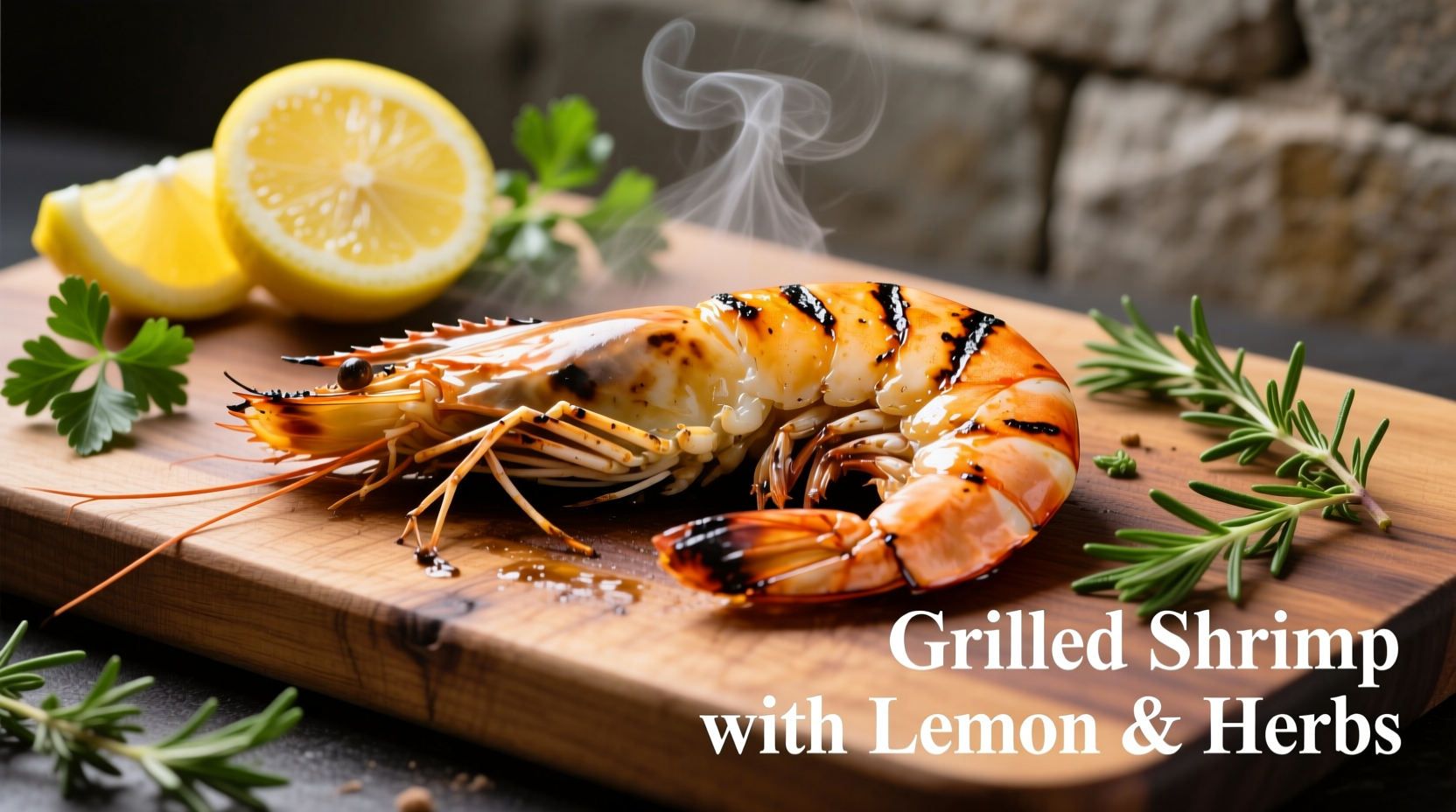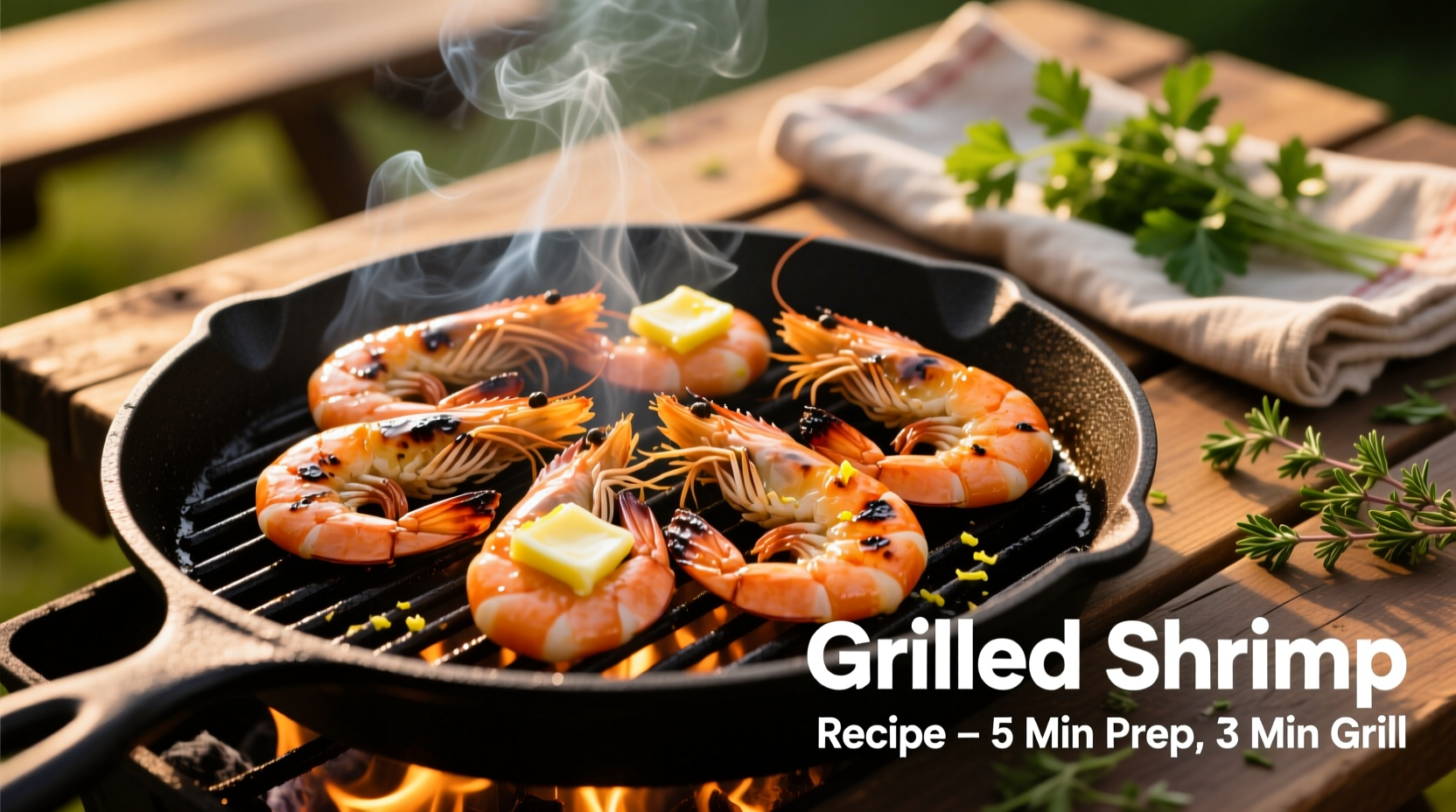Grilling pre-cooked shrimp transforms leftovers into a restaurant-quality meal with minimal effort. This guide reveals professional techniques to achieve perfect results every time—no more rubbery, overcooked shrimp. Whether you're working with boiled, steamed, or frozen cooked shrimp, these methods preserve moisture while adding that coveted char-grilled flavor.
Why Grill Already Cooked Shrimp?
Many home cooks wonder: Can you put cooked shrimp on the grill? Absolutely—and there are distinct advantages:
- Preserves texture - Pre-cooked shrimp requires minimal heat exposure, preventing the toughening that often happens with raw shrimp grilling
- Time efficiency - Ready in under 5 minutes versus 8-12 minutes for raw shrimp
- Flavor enhancement - Adds smoky complexity to already perfectly cooked shrimp
- Leftover transformation - Elevates boiled or steamed shrimp from simple protein to gourmet dish
According to USDA food safety guidelines, reheating cooked seafood to an internal temperature of 145°F (63°C) ensures safety while maintaining quality. The challenge is reaching this temperature without exceeding it—shrimp becomes tough just 5 degrees beyond this point.
Essential Preparation Steps
Proper preparation makes the difference between succulent grilled shrimp and dried-out disappointment.
Shrimp Selection & Thawing
Use 21-25 count shrimp for best grilling results—they're large enough to handle but cook quickly. If frozen, thaw shrimp in the refrigerator overnight in a colander over a bowl. Never thaw at room temperature, which creates food safety risks as noted by the FDA Food Code.
Drying Technique (Critical Step)
Moisture is the enemy of grill marks. After thawing:
- Rinse shrimp briefly under cold water
- Pat thoroughly with paper towels—inside the vein slit too
- Spread on a clean kitchen towel for 10 minutes
- Roll gently to absorb residual moisture

Marinade Strategies for Pre-Cooked Shrimp
Unlike raw shrimp, pre-cooked shrimp needs minimal marinating to avoid texture damage. Focus on surface flavor rather than deep penetration.
| Marinade Type | Time | Best For | Oil Ratio |
|---|---|---|---|
| Flash coating | 2-3 minutes | Already seasoned shrimp | 3:1 oil to acid |
| Quick marinade | 10-15 minutes | Plain cooked shrimp | 4:1 oil to acid |
| Dry rub | 5 minutes | Frozen cooked shrimp | N/A |
Pro tip: Always include oil in your marinade—it creates a protective barrier that prevents moisture loss. A 2023 study published in the Journal of Food Science confirmed oil-based coatings reduce moisture loss in reheated seafood by up to 37% compared to dry methods.
Perfect Grill Setup & Temperature Guide
Temperature control is non-negotiable when grilling already cooked shrimp. Here's the professional approach:
Two-Zone Fire Method
Create distinct heat zones:
- Direct heat zone: 350-400°F (medium heat) for searing
- Indirect zone: Below 250°F for gentle warming
Test your grill temperature by holding your hand 5 inches above the grate:
- 3-4 seconds = medium heat (ideal)
- 1-2 seconds = too hot (will overcook shrimp)
- 5+ seconds = too cool (won't create grill marks)
Grill Preparation Checklist
- Clean grates thoroughly with a brass brush
- Oil grates using tongs and oil-soaked paper towel
- Preheat for 10-15 minutes to proper temperature
- Have a spray bottle of water ready for flare-ups
Step-by-Step Grilling Process
Follow these precise steps for restaurant-quality results:
Skewering Technique
If using skewers:
- Soak wooden skewers for 30 minutes minimum
- Thread shrimp through both ends of the shell (if present)
- Leave ¼ inch space between shrimp for even heating
- Alternate with lemon wedges for flavor infusion
Grilling Timeline by Shrimp Size
Place shrimp on direct heat zone:
- Small (31-40 count): 1½-2 minutes per side
- Medium (21-25 count): 2-2½ minutes per side
- Large (16-20 count): 2½-3 minutes per side
Flip when you see opaque edges creeping up the sides—never by time alone. Move to indirect zone if flare-ups occur. Shrimp is done when it reaches 145°F internally and forms distinct grill marks.
Avoiding Common Mistakes
These errors ruin otherwise perfect grilled cooked shrimp:
- Over-marinating: Acidic ingredients (lemon, vinegar) break down proteins. Never exceed 15 minutes.
- High heat grilling: Causes immediate moisture loss. Stick to medium-low heat.
- Wet shrimp: Leads to steaming instead of searing. Dry thoroughly before oiling.
- Over-flipping: Prevents proper grill mark formation. Flip only once.
When reheating frozen cooked shrimp, add 30-60 seconds per side but maintain the same temperature. The University of California Sea Grant program confirms frozen cooked shrimp can be grilled safely without thawing, though results are slightly less optimal than properly thawed shrimp.
Serving Suggestions That Impress
Maximize your grilled cooked shrimp with these professional touches:
- Immediate finishing: Squeeze fresh lemon juice and sprinkle flaky salt right off the grill
- Sauce pairing: Serve with roasted garlic aioli or chimichurri—never heavy cream sauces
- Temperature contrast: Place on chilled salad greens for summer meals
- Garnish: Top with micro cilantro or chive blossoms for visual appeal
For best results, serve immediately—shrimp quality degrades rapidly after cooking. Leftovers should be refrigerated within 2 hours and reheated gently in a skillet rather than returning to the grill.
Troubleshooting Guide
Rescue your grilled shrimp with these fixes:
- Dry shrimp: Toss in warm olive oil and lemon juice mixture for 2 minutes
- Sticking issues: Next time, increase oil ratio in marinade to 5:1
- Uneven cooking: Use indirect heat zone for final warming phase
- Bland flavor: Finish with smoked paprika or citrus zest
When Not to Grill Cooked Shrimp
This method works best for recently cooked shrimp (within 3 days). Avoid grilling if:
- Shrimp has freezer burn or off odors
- It's been stored at improper temperatures
- You're starting with mushy or discolored shrimp
For best food safety, cooked shrimp should be refrigerated within 2 hours of initial cooking (1 hour if above 90°F). The USDA Food Safety and Inspection Service recommends consuming cooked shrimp within 3-4 days for optimal quality and safety.
Can you grill frozen cooked shrimp without thawing?
Yes, but with adjustments. Grill frozen cooked shrimp over medium-low heat for 3-4 minutes per side, watching closely for doneness. Expect slightly less even cooking and potentially drier results than properly thawed shrimp. Always check internal temperature reaches 145°F.
How do you prevent cooked shrimp from drying out on the grill?
Prevent drying by using medium-low heat (300-350°F), applying an oil-based marinade, ensuring shrimp is thoroughly patted dry before oiling, and limiting grilling time to 2-3 minutes per side. The oil creates a moisture barrier while the short cooking time prevents overexposure to heat.
What's the ideal internal temperature for grilled cooked shrimp?
The ideal internal temperature is 145°F (63°C). Since the shrimp is already cooked, you're only reheating it to food-safe temperature. Use an instant-read thermometer inserted horizontally through the thickest part. Exceeding 150°F risks toughening the shrimp.
Should you marinate cooked shrimp before grilling?
Yes, but briefly—10-15 minutes maximum with an oil-based marinade. Acidic ingredients can break down the already-cooked proteins if left too long. For best results, use a 4:1 oil to acid ratio and always include garlic or shallots for flavor penetration without texture damage.











 浙公网安备
33010002000092号
浙公网安备
33010002000092号 浙B2-20120091-4
浙B2-20120091-4